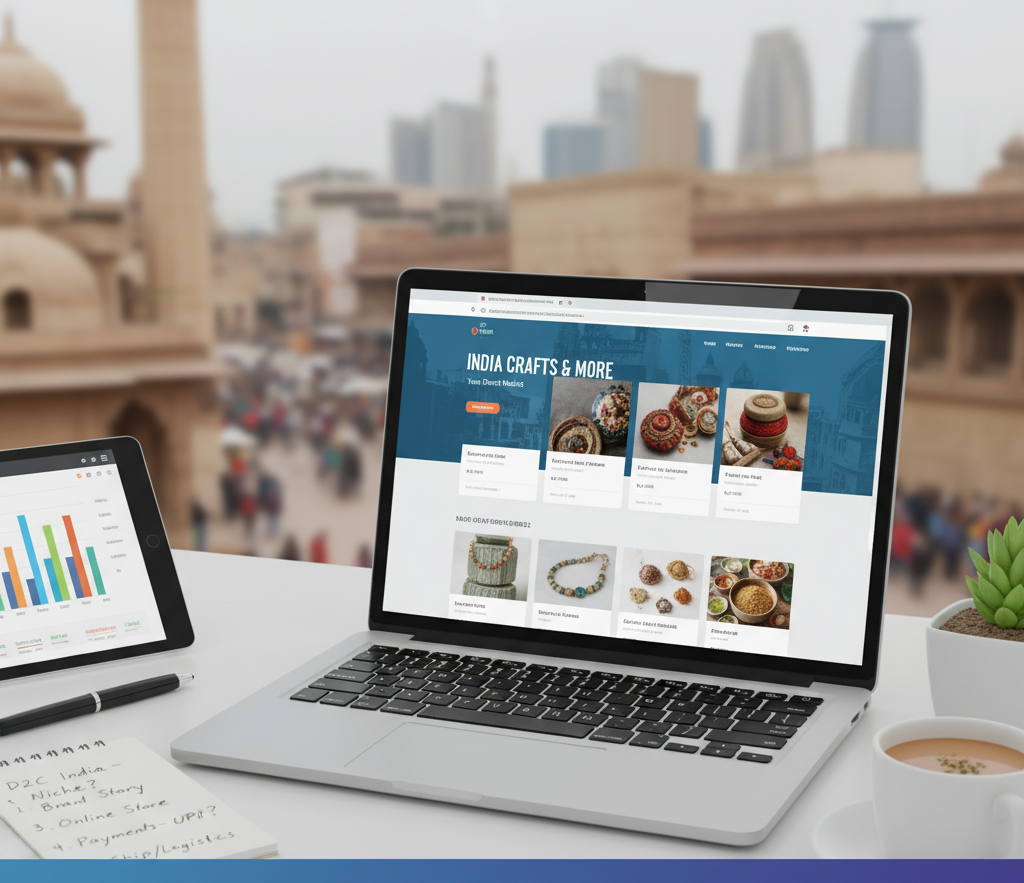Discover how to start your own Direct-to-Consumer (D2C) eCommerce business in India with this beginner-friendly guide. Learn about easy business setup in India, free seller onboarding, instant local store digitization, and how to launch your store in ₹1 using modern free business tools for local stores. Build your brand, connect directly with customers, and grow in the booming D2C marketplace for sellers.
India’s eCommerce landscape is evolving faster than ever. With changing consumer behavior and digital transformation, Direct to Consumer (D2C) eCommerce in India has become one of the most lucrative business models for new-age entrepreneurs.
Gone are the days when brands relied only on marketplaces like Amazon or Flipkart. Today, D2C brands connect directly with customers through their own websites or mobile apps, building stronger relationships, better margins, and brand loyalty.
Whether you’re a startup or a small local business, this guide will help you understand how to launch a D2C store, set up your brand online, and grow sustainably with free business tools for local stores.
What is Direct-to-Consumer (D2C) eCommerce?
The D2C model eliminates middlemen. Instead of selling products through retailers or third-party marketplaces, brands directly reach customers via their own online stores.
This means complete control over:
- Product pricing and branding
- Customer data and engagement
- Marketing and customer experience
In short, D2C eCommerce in India empowers sellers to build a personalized journey for every buyer — something traditional retail cannot offer.
Why D2C is Booming in India (2025 and Beyond)
India’s D2C ecosystem is witnessing exponential growth due to:
- 📱 Digital adoption: Increased smartphone usage and affordable internet.
- 💳 Secure online payments: Digital wallets and UPI make transactions seamless.
- 🚀 Affordable setup tools: Anyone can now launch a store within minutes.
- 🌍 Global reach: Even small-town entrepreneurs can sell nationwide.
By 2025, India’s D2C market is expected to surpass $60 billion, driven by innovative sellers and easy business setup solutions in India that require minimal investment.
Step-by-Step: How to Start Your D2C Store Setup in India
Starting your D2C journey is easier than ever — thanks to free platforms and instant store digitization tools.
Step 1: Choose Your Product Niche
Find a niche that aligns with your passion — like eco-friendly products, fashion, skincare, or food items.
Step 2: Select a D2C Marketplace for Sellers
Look for D2C marketplaces for sellers that support free store creation, fast onboarding, and marketing integration.
Step 3: Easy Business Setup in India
Use platforms offering easy business setup in India with automated registration, GST support, and business verification in minutes.
Step 4: Create and Launch Your Store in ₹1
With new-age platforms, you can launch your store in ₹1 — ideal for startups testing the market before scaling.
Step 5: Enable Free Seller Onboarding
Opt for tools that provide free seller onboarding — with templates, product upload features, and built-in logistics.
Step 6: Leverage Instant Local Store Digitization
Transform your offline store into an online brand instantly with instant local store digitization tools that sync your inventory and enable digital payments.
Step 7: Market Your Store
Use SEO, Google Ads, influencer marketing, and social media to build brand awareness and attract direct customers.
Benefits of the D2C Model for Indian Entrepreneurs
The Direct to Consumer eCommerce India model offers several advantages:
| Benefit | Description |
|---|---|
| Higher Profit Margins | Eliminate intermediaries and retain full profit. |
| Brand Control | Manage packaging, pricing, and promotions as per your vision. |
| Customer Insights | Access direct data for better personalization. |
| Scalability | Easily expand your digital reach and product lines. |
| Cost Efficiency | Start with free business tools for local stores to minimize expenses. |
Free Business Tools for Local Stores in India
Starting doesn’t have to be expensive. Several platforms offer free business tools for local stores, such as:
- Store website builders with no coding
- Integrated payment gateways
- Automated tax/GST invoicing
- AI-powered marketing assistants
- Analytics dashboards
These tools help new sellers stay competitive without heavy investments.
Common Challenges in D2C eCommerce (and How to Solve Them)
Even though the D2C model is promising, beginners may face:
- Traffic building issues: Use SEO and content marketing.
- Payment failures: Choose reliable Indian payment gateways.
- Customer retention: Offer loyalty programs and personalized offers.
Consistency, strong branding, and customer experience are key to overcoming these hurdles.
The Future of D2C Commerce in India
The future of Direct to Consumer eCommerce India lies in hyper-personalization, AI-driven product recommendations, and sustainable logistics.
As consumers demand authenticity, speed, and transparency, D2C brands that adopt smart technologies and free seller onboarding systems will lead the next wave of Indian digital retail.
Final Thoughts
Starting your own D2C store setup in India is not just an opportunity — it’s a movement. With easy business setup tools, instant local store digitization, and launch store in ₹1 options, every entrepreneur can build their dream brand online.
If you’re ready to enter the world of Direct to Consumer eCommerce in India, now is the perfect time to start. Digitize today, grow tomorrow.
FAQs
Q1. How can I start a D2C business in India?
You can start by choosing a niche, building your online store using D2C marketplaces for sellers, and promoting your brand through digital marketing.
Q2. Is D2C better than selling on marketplaces like Amazon?
Yes, because D2C eCommerce in India gives full control over pricing, branding, and customer relationships — leading to higher profits.
Q3. Can I start a D2C store for free?
Absolutely. Many platforms offer free seller onboarding and free business tools for local stores, allowing you to launch your store in ₹1.



.jpeg)
Comments
No comments yet. Be the first to comment!